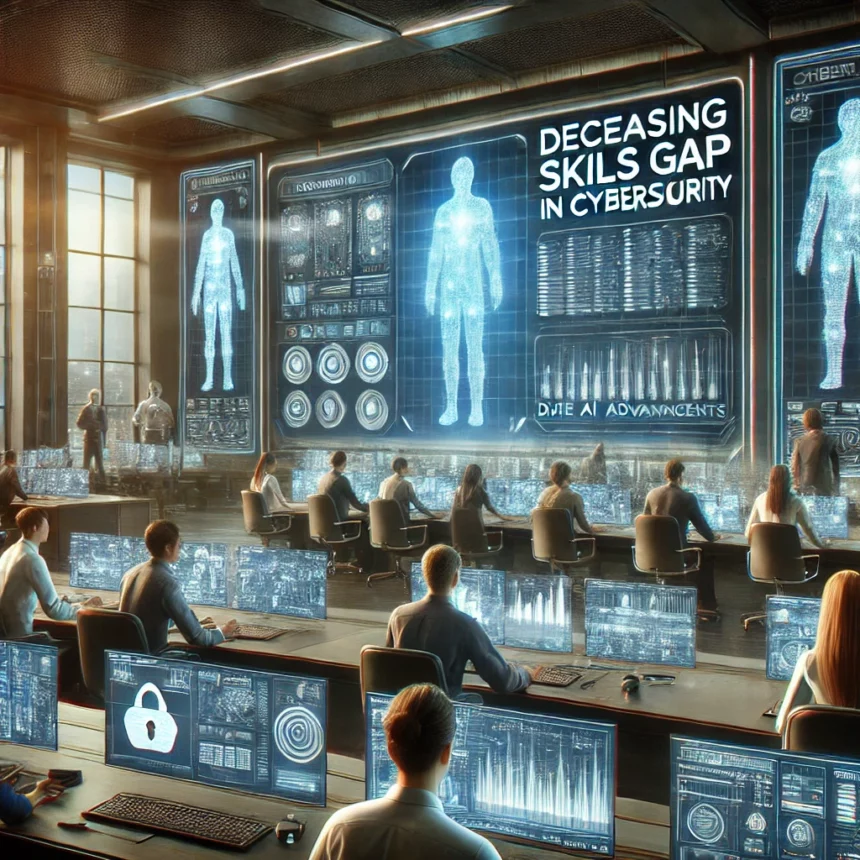Will AI Revolution Collapse the Cybersecurity Skills Gap?
With AI-powered cyber threats on the rise, the cybersecurity skills gap hit 4 million people in 2023. Experts predict that by 2028, Generative AI (GenAI) will significantly reduce this gap, potentially eliminating the need for specialized education for half of all entry-level cybersecurity positions. This shift could solve a major problem for the industry, but what about current challenges?
Many businesses are eager to embrace AI, yet only a few feel they have the necessary technology, funding, culture, and skills to support its adoption. The cybersecurity skills gap is central to this issue, prompting immediate changes to create a safer digital environment.
The AI Cyber Revolution Begins
When computers became mainstream, many feared job losses. While some roles vanished, most evolved and adapted. Today, work without computers or smartphones is unimaginable. Now, AI and GenAI are set to enhance productivity further. Though we are in the early stages of this technology, as we learn to use AI wisely, knowledge and best practices will grow, along with more regulations and security measures.
AI might replace some security roles, but the cybersecurity industry will adapt. Changes are happening rapidly.
How AI is Transforming Cybersecurity Roles
One significant change in cybersecurity is the Chief Information Security Officer’s (CISO) increasing responsibilities. Recent SEC regulations have broadened the CISO’s role, involving them more in business decisions and direct reporting to CEOs. Despite fears of job loss, no cybersecurity roles have become obsolete. Instead, roles are evolving, and new positions like AI security specialists are emerging.
With fewer manual tasks, analysts are managing AI-driven cybersecurity technologies. As AI grows more powerful, we can expect more roles like AI security analysts and Machine Learning Engineers who will train and verify AI models.
Despite these advancements, 3.5 million cybersecurity positions are projected to remain unfilled through 2025. AI is already enhancing work and accelerating training and education, which is why 86% of CISOs believe it will help alleviate skills gaps and talent shortages.
Addressing Today’s Skills Gap
Even with emerging AI capabilities, the cybersecurity community must tackle today’s threats. This requires a collaborative approach involving government, academia, and the private sector.
To attract and retain skilled workers, innovative solutions like the Department of Defense (DoD) Cyber Service Academy cover academic expenses in exchange for post-graduation service, and the Women in Apprenticeship and Nontraditional Occupations Grant Program addresses gender underrepresentation.
Education must also keep pace with industry needs. Instead of relying solely on university research, programs should involve industry experts to ensure relevance. University Security Operations Center (SOC) labs can mimic real-world experiences to better prepare students. Industry leaders can provide hands-on training and lectures on emerging AI threats and defense strategies.
Both government and private sectors can support associations dedicated to helping cybersecurity professionals upskill.
Looking Ahead
The cybersecurity community will continue to collaborate and share best practices. The Cybersecurity Infrastructure Security Agency (CISA) and significant funding in the proposed 2025 budget reflect the government’s commitment to cybersecurity.
As the industry upskills its workforce to manage the cybersecurity skills gap and harness AI, this technology will empower workers to do more. Instead of a defined shift, cybersecurity roles and AI are intertwined in a continuous evolution. The future is happening now.
















